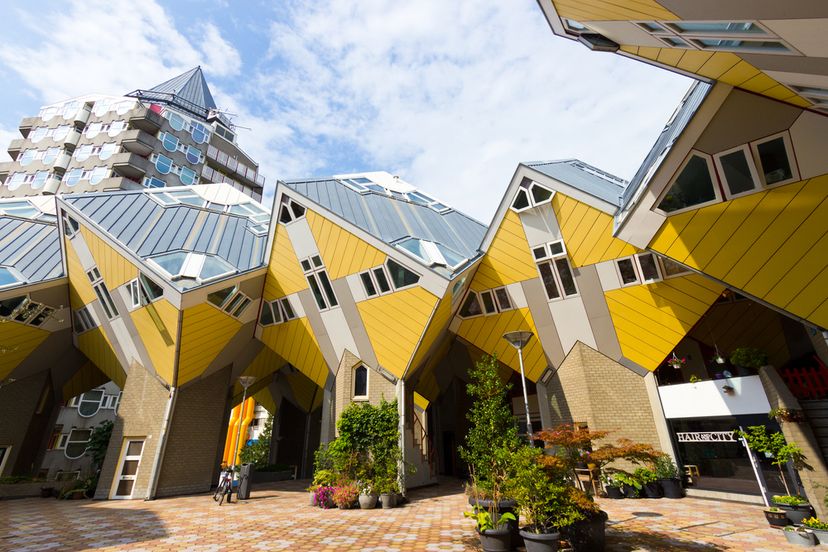
Some travel for action, some for adventure, and some travel for natural beauty, while others appreciate a good piece of architectural art. The world is full of such works, ranging from beautifully detailed buildings whose history dates back before a time we can even imagine, to towering feats of engineering whose summits seem to almost touch the sky. Yes, the world of architectural design is an exciting and visually interesting field and it seems that whatever city or country we choose to travel to, there will inevitably be some sort of architectural landmark. As travelers, we often notice those standout buildings with sleek geometric designs when first visiting a city so in this article we explore 15 visually stunning modern buildings of the world:
Advertisement
1. Markthal -Rotterdam, Netherlands
Also known as ‘Market Hall’ this first installment on our list of amazing modern architecture shows the innovation and progressive nature of the city of Rotterdam Netherlands. The brilliantly decorated Market Hall combines food, leisure, living and parking creating a fully functional living center.
Below the covered arch structure lies a food market with over 100 stalls offering fresh foods daily. Parking is offered in the basement below and the cover of the building offers an indoor market that still has the feel of an outdoor market thanks to the buildings huge glass faces. If you’re a fan of innovative living, you could find yourself living amongst the colorful murals as the building houses 228 apartments all with unique views.
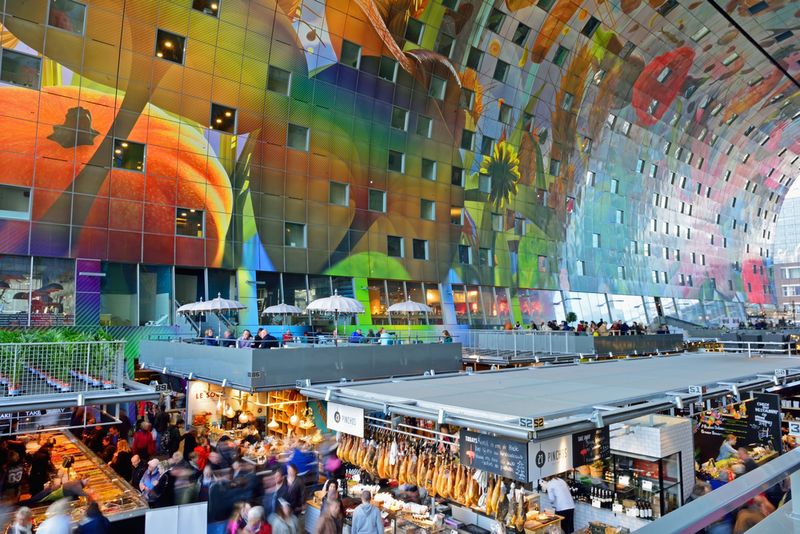
Advertisement
2. Habitat 67 -Montreal, Canada
Habitat 67 designed by Israeli-Canadian architect Moshe Safdie was named so after originally being built for Expo 67 and The World’s Fair in Montreal Canada. The landmark building which lies next to the Saint Lawrence River started as Safdie’s Master’s thesis project through McGill University in Canada.
The design of this unique structure consists of 364 prefabricated concrete forms uniquely arranged to create 146 units in the building. Development of the building was funded by the federal government of Canada but in 1985, the building’s tenants purchased the building under a limited partnership. To this day, Safdie still owns a penthouse apartment in the building.
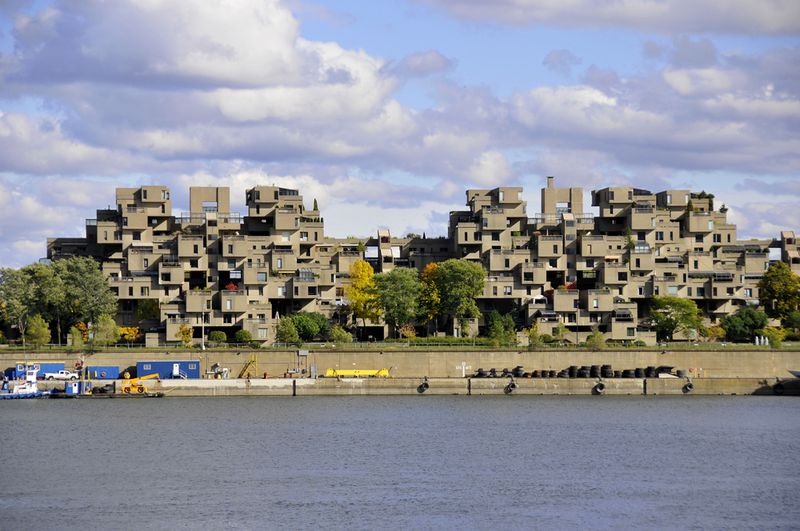
Advertisement
3. The Chapel of Holy Cross -Arizona, USA
Perched amongst the scenic buttes of Sedona Arizona is the spectacular Chapel of Holy Cross, also known as ‘Chapel in the Rock’. The Chapel was commissioned by Arizona local Marguerite Brunswig Staude, who had other ideas about the original location for the project.
The original project, inspired by the newly constructed Empire State Building in New York City, was scheduled to be built in Budapest Hungary in collaboration with Lloyd Wright, son of famous architect Frank Lloyd Wright. Due to the breakout of World War II in 1939, the project was moved to Staude’s native region of Sedona Arizona. The chapel was completed in 1956 at a cost of $300,000 USD. Today the space offers breathtaking views and a chance to be truly connected to earth, nature and beyond.
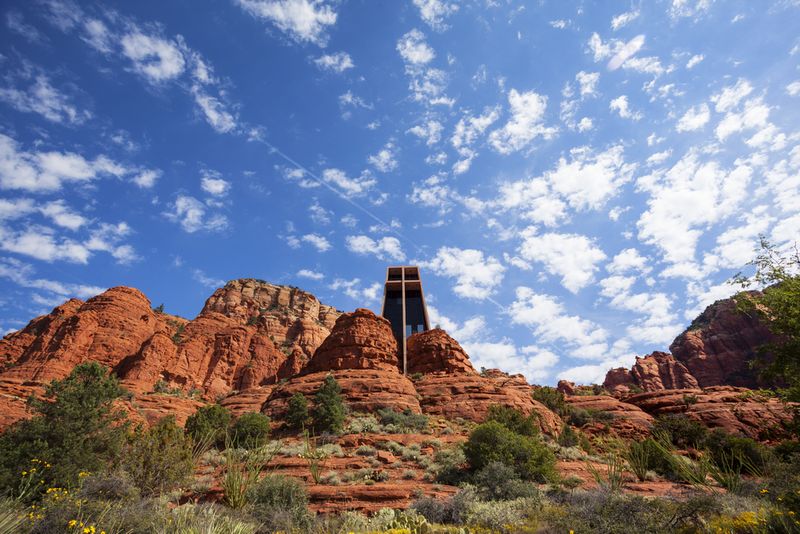
Advertisement
4. Guggenheim Museum -Bilbao, Spain
It’s only fitting that a museum dedicated to modern and contemporary art be of spectacular modern design itself. The Guggenheim Museum in Bilbao Spain is all that and more. Designed by famous Canadian-American architect Frank Gehry, the building which sits beside the Nervion River was first opened in 1997.
Incorporating mediums of stone, glass and titanium, the building’s shapes and swoops unfold to create a most recognizable structure which offers more than 120,000 sq ft of exhibition space; more than the museums in New York and Venice combined. One of Gehry’s most recognizable buildings, this amazing structure is widely considered one of the most important works of architecture completed since 1980.
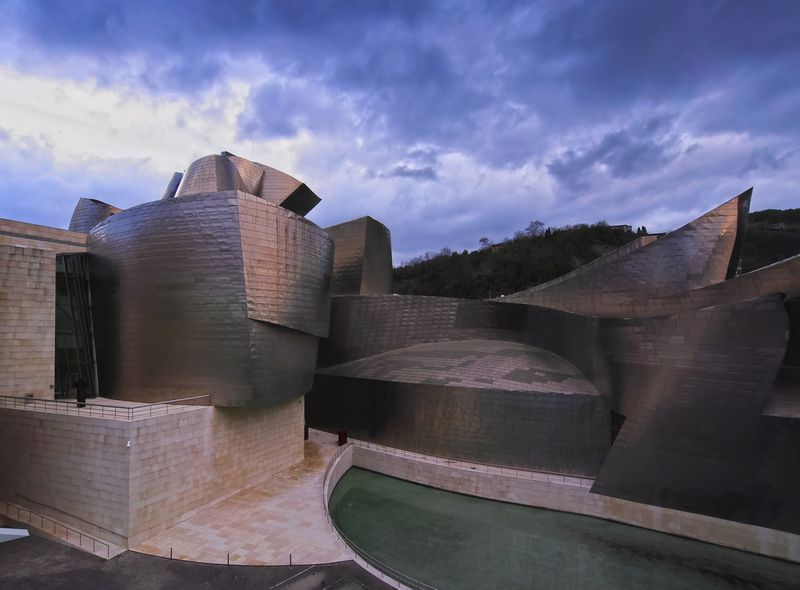
Advertisement
5. Fallingwater -Pennsylvania, USA
The house that originally inspired tranquil living, you can’t get much more entwined in nature than at Fallingwater. Designed by famous American architect Frank Lloyd Wright, this house was built as a private residence for the Kaufmann family. The family owned land with a waterfall outside Pittsburgh Pennsylvania and commissioned Wright to design a home for them in which they could entertain large groups of people. Given that the plot had limited space, a cantilever design was used to address this issue and the house was built over the waterfall on Bear Run.
Since its completion in 1939, the structure has received many accolades including “best all-time work of American architecture’ in 1991 by the American Institute of Architects. The house is also listed among Smithsonian’s Life List of ‘28 places to visit before you die’. The Kaufmann family eventually donated the house to the Western Pennsylvania Conservancy and in 1964, it was formally opened as a public museum.
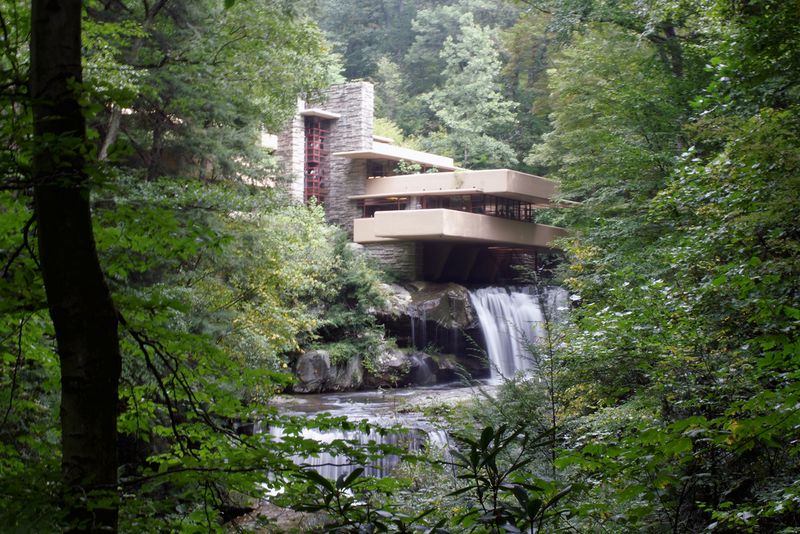
Advertisement
6. The National Library -Minsk, Belarus
You’d be forgiven for not knowing the geometric name for a 3D shape with 8 triangular and 18 square faces. The answer is a rhombicuboctahedron, and this is exactly the shape of the main structure of the National Library of Balarus located in Minsk.
The 236 ft high building has 22 floors and was finished in 2006. Designed by architects Mihail Vinogradov and Viktor Kramarenko, the building can seat about 2,000 readers and features a spectacular 500 seat conference hall. The unique design of this interesting work of architecture draws people from far and wide to marvel at its glory, making it one of the most notable landmarks in Minsk.
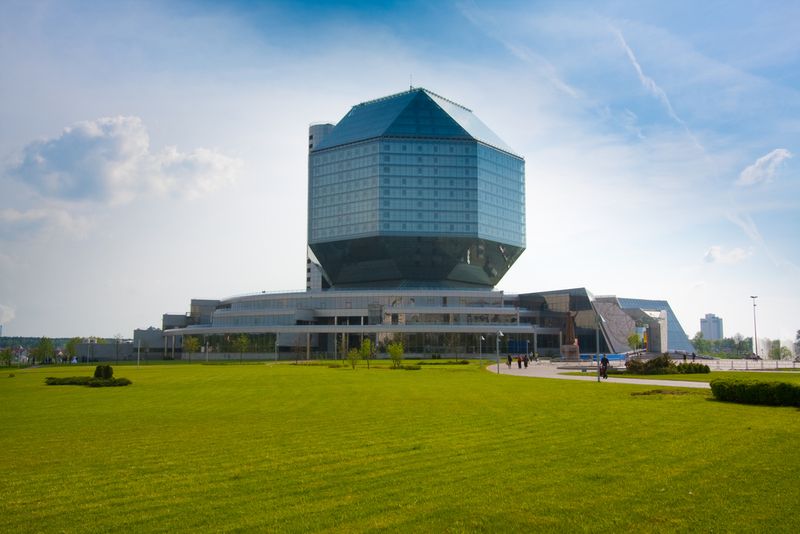
Advertisement
7. Cube Houses -Rotterdam, Netherlands
Just more proof that Rotterdam Netherlands is truly a hotspot of modern architecture; these 38 interconnected cubes offer truly unique living. The Cube Houses as they are known, were designed by architect Piet Blom and constructed on Overblaak Street above the Blaak Subway Station in Rotterdam.
Blom designed the innovative living spaces with the premise of “living as an urban roof” and took the traditional cube shaped living space, tilted it 45 degrees and placed it atop a a hexagon shaped pylon. The cubes are all interconnected and the designer describes the project as a village where each cube (house) represents a tree and all the trees (houses) together create a forest.
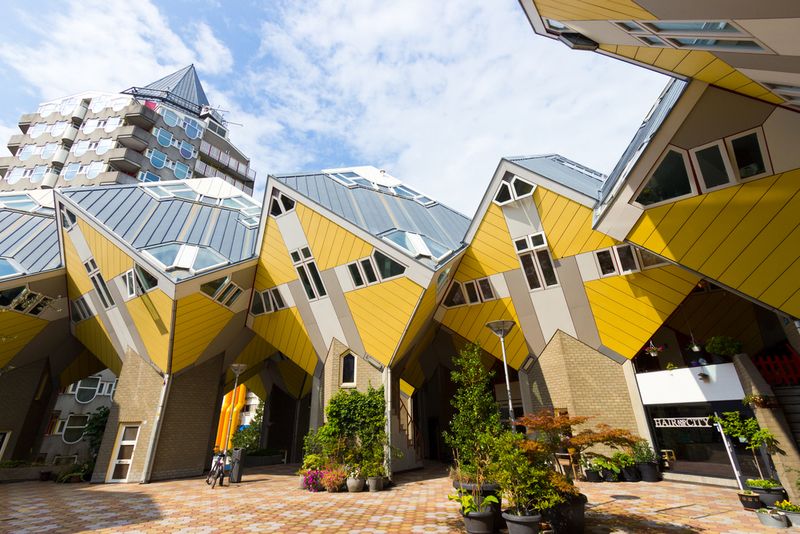
Advertisement
8. Lotus Temple -New Delhi, India
Built in 1986 by Iranian architect Fariborz Sahba, the easily recognizable Lotus Temple located in New Delhi is one of the city’s most notable landmarks. The building is a House of Worship for the Bahá’í faith and the structure follows the religions architectural requirements that all Houses of Worship have 9 sides in a circular shape.
The structure quite obviously takes its influence from a lotus flower as it includes 27 individual white marble clad ‘petals’ that form the 9 sides of the temple. The marble for the exterior comes from Greece and is from the very same source as was used for many other ancient monuments and other Bahá’í Houses of Worship. The surrounding 26 acre temple grounds also include 9 ponds and a garden. The beautiful building has won numerous architectural awards and has been featured in hundreds of publications over the years.
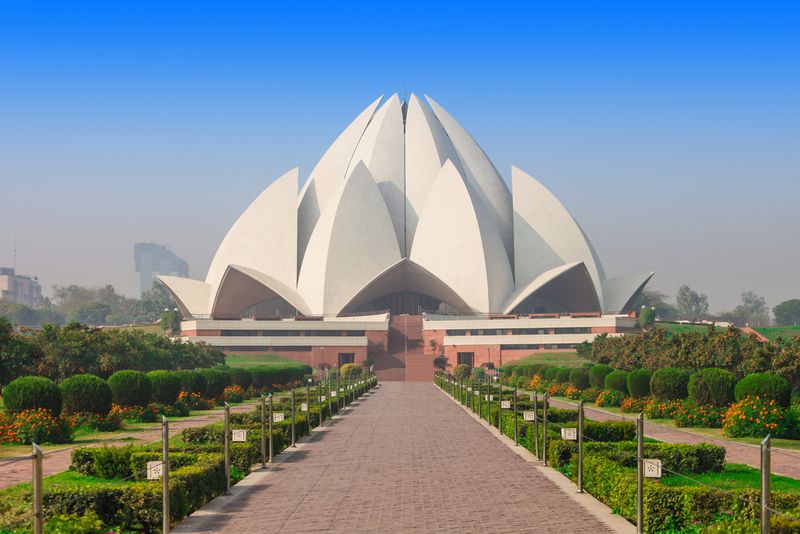
Advertisement
9. Marie-Elisabeth-Lüders-Haus -Berlin, Germany
Located in Berlin’s government district is the interesting and uniquely designed Marie-Elisabeth-Lüders-Haus. Completed in 2003 by German architect Stephan Braunfels this structure has many interesting features, perhaps most notably the ‘Great Hall’ which has 2 large circular openings.
The facility, which also houses the Parliamentary Library, was named after Lüders who was instrumental in the fight for women’s rights in Germany and commemorates all her hard work and advancement. The site on which the building was built is that of the former Berlin Wall and the building’s modern concrete design is meant to reflect Germany’s cold history and socialist past.

Advertisement
10. United States Air Force Academy Cadet Chapel -Colorado, USA
Originally a rather controversial design, the striking 17 spire Cadet Chapel at the US Air Force Academy north of Colorado Springs has now become a highly regarded piece of American architecture. The remarkable work measures an impressive 150 feet high and 280 feet long. Construction is steel frame with individual aluminum panels. Between each section is a gap which is filled with colorful glass creating striking beauty when standing in the chapel.
Designed by American architect Walter Netsch and completed in 1962 the chapel was designed to house 3 individual worship areas within the same structure. On the upper level is the Protestant area, below which is space for Catholic and Jewish faiths as well as a Buddhist room. The lower level is used for meeting rooms and a space for the Islamic services.
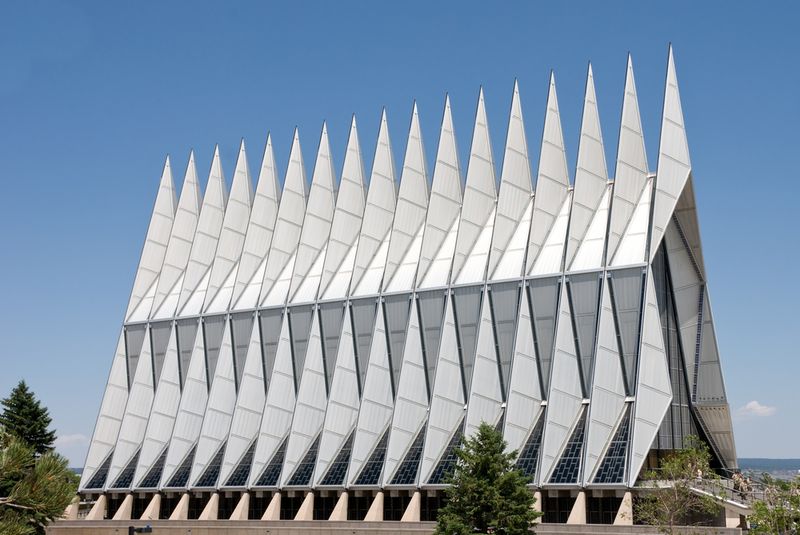
Advertisement
11. Beijing National Stadium -Beijing, China
You may recognize this easily identifiable piece of architecture from the 2008 Summer Olympics. Officially known as National Stadium in Beijing but affectionately nicknamed the ‘Bird’s Nest’, this interesting stadium was built in 2007 in preparation for China to play host to the Summer Olympic Games.
The design of the stadium which drew inspiration from the study of Chinese ceramics, was submitted by Swiss architecture firm Herzog & de Meuron and cost $428 million US to build. Originally planned to have a retractable roof, this was removed from the design but did inspire the ‘random-looking’ steel frame as it was going to be a way to hide the roof’s supports. After the Olympics, the iconic structure suffered from a lack of use and major events however, these days it’s reportedly earning sufficient income as a tourist attraction.
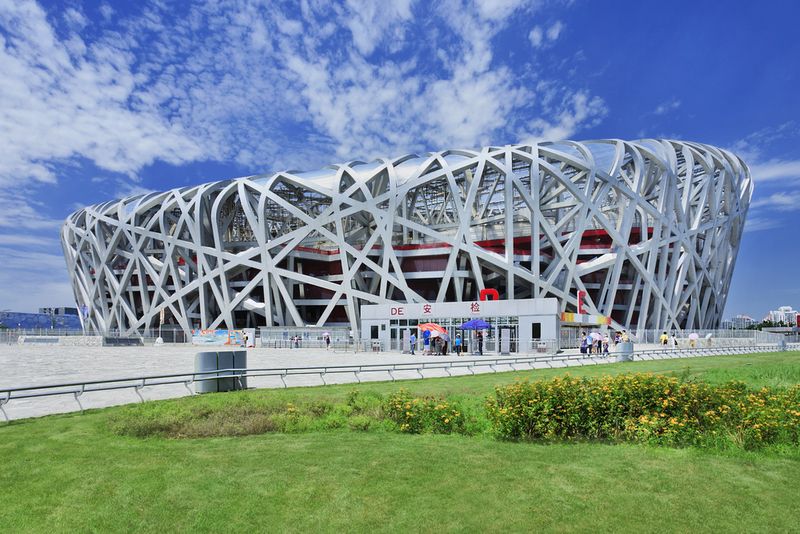
Advertisement
12. NORD LB Building -Hannover, Germany
Located in the heart of Hannover Germany is the boldly designed Norddeutsche Landesbank building, abbreviated as NORD LB. The building is the head office for this German bank and is one of the largest commercial banks in the country.
The 17 story high structure was designed by German architecture firm Behnisch Architekten and was opened in 2002. The building which has space for 1,500 employees has several notable features including its extensive glass construction with an 81,000 sq m glass floor space and an inner courtyard featuring 3 lakes. A total of 18,800 individual panes of glass make up the design of this state-of-the-art office and the features are rounded out by in-house shops, restaurants and the well-known NORD LB art gallery.
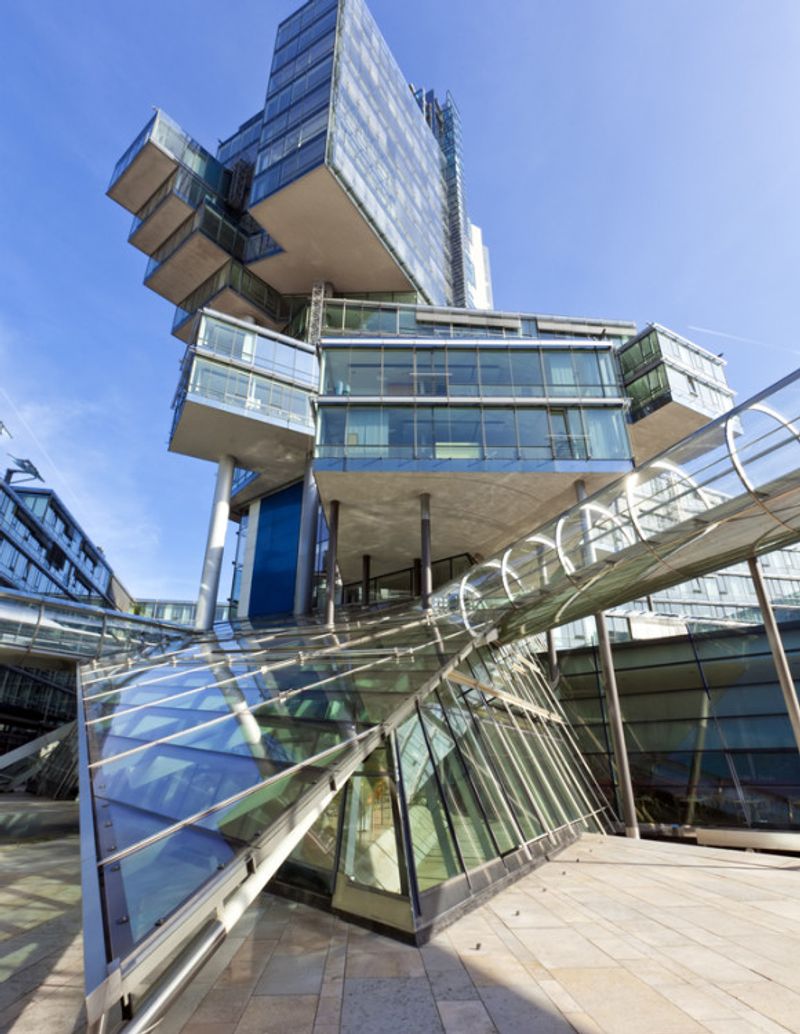
Advertisement
13. Dancing House -Prague, Czech Republic
The building known as Dancing House sits on the historically important site of a former house that was destroyed by the US bombing of Prague in 1945. Dutch insurance company Nationale-Nederlanden sponsored the project which was completed in 1996 as a collaboration of Croatian-Czech architect Vlado Milunić and famous Canadian-American architect Frank Gehry.
Dancing House got its name from the unique design featuring 2 side-by-side towers which look like a pair of dancers. This modern design was controversial as it was starkly different from the traditional Baroque and Gothic buildings for which Prague is famous. Despite this, it has gained much publicity and attention over the years and the shape was featured on a gold 2,000 Czech koruna coin.
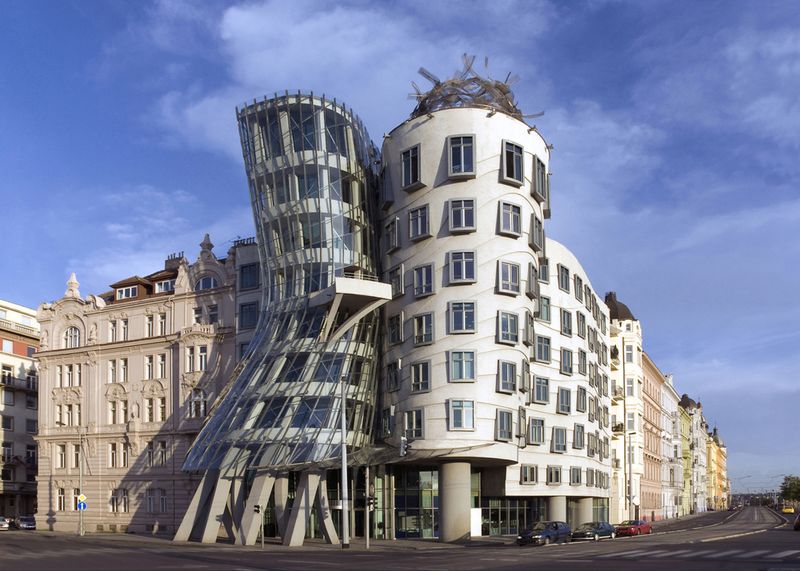
Advertisement
14. Cathedral of Brasilia -Brasilia, Brazil
One of Brasilia’s most recognizable landmarks, the Cathedral of Brasilia serves as the Archdiocese of Brasilia and serves as the Roman Catholic cathedral for the city. The interesting design was created by Brazilian father of modern architecture, Oscar Niemeyer and construction was completed in 1970. Niemeyer was also responsible for the designs of several other civic buildings in Brasilia.
The structure consists of 16 concrete columns which reach up to the glass roof and are said to appear ‘open, to the heavens’. Each of the concrete columns weighs a whopping 90 tons and are all connected by 16 fiberglass panels featuring blue, green, white and brown stained glass work. The majority of the construction of the cathedral is actually underground with only the 138 foot roof and bell tower visible above ground.
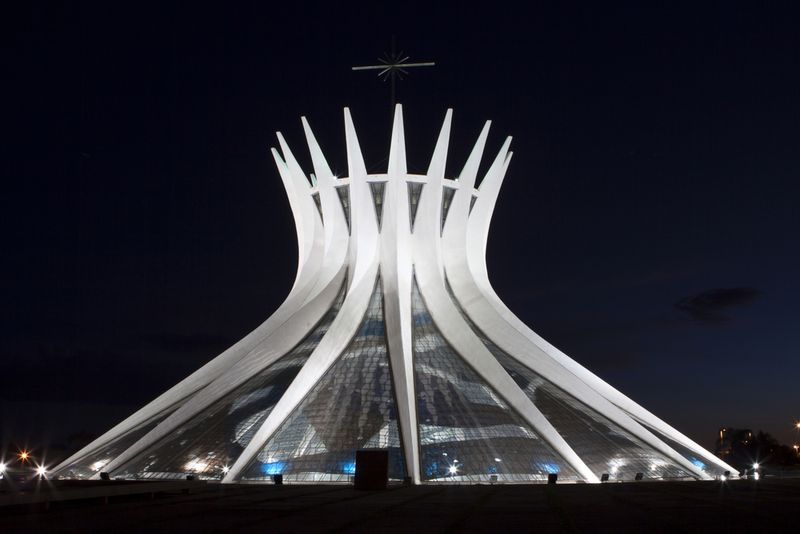
Advertisement
15. Experience Music Project Museum -Seattle, USA
The Experience Music Project or EMP Museum for short, is located in the music mecca of Seattle Washington in the USA. Sitting adjacent to the iconic space-needle, this 140,000 sq ft structure was designed by the renowned Canadian-American architect Frank Gehry.
The design of the museum is quite similar to many of Gehry’s other projects with its shiny sheet metal construction. The concept for the design was reportedly based on studying images of smashed guitars and guitar components. Though Gehry has received many accolades for his works of architectural art, this design was not one of them and the mishmash has been called everything from a ‘blob’ to ‘something that crawled out of the sea, rolled over, and died’.
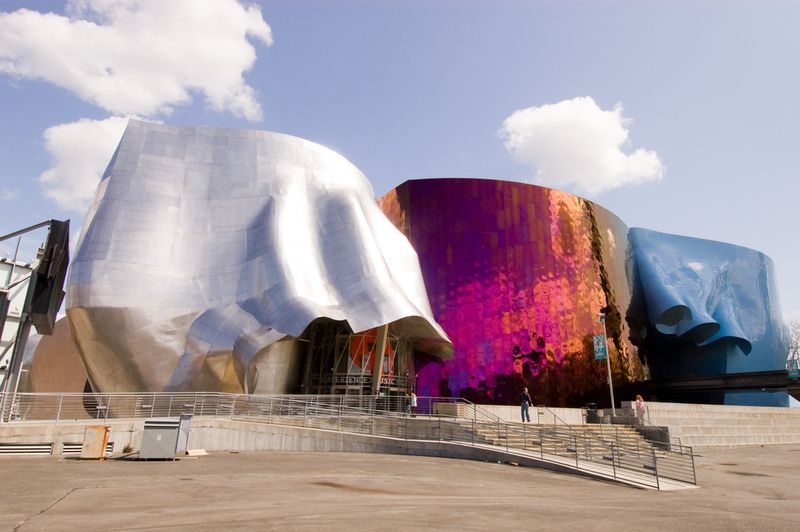
Advertisement